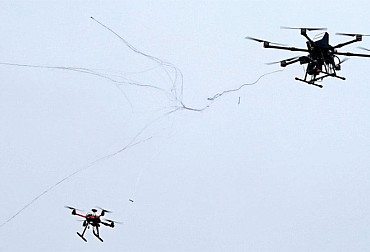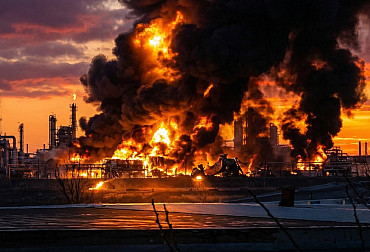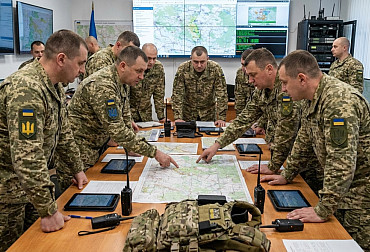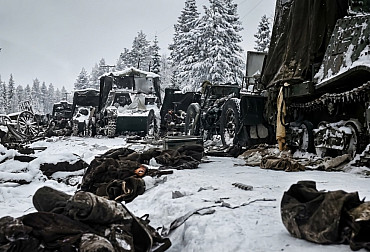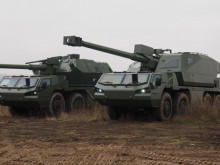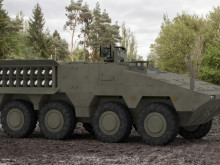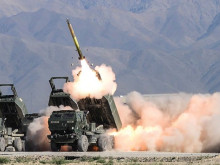Tank lesson from Ukraine
One of the most significant events in the Ministry of Defence is the recent decision to acquire German Leopard 2 tanks. The Czech Republic should receive from Germany (as a replacement for our T-72 tanks sent to help the struggling Ukraine) in the first phase 14 Leopard 2A4 tanks (plus one recovery tank on the same platform), which would initially serve for training and later be upgraded to the Leopard 2A7 version. Approximately 50 brand new Leopard 2A7+ tanks would then be procured to accompany these tanks. After many years of delays, Czech tankers should finally see new modern tanks.
Nevertheless, this decision is sometimes met with negative reactions. There are opinions whether the Leopard 2 tanks are the best solution and whether it would be better to buy other tanks such as the American M1A2C Abrams or the South Korean K2 Black Panther tanks. However, there are also opinions that the Czech Republic should not acquire any tanks, that the tank army should be completely abolished - and the saved funds should be invested in other, more promising types of military equipment, such as drones, etc. According to these views, tanks are both too heavy and too vulnerable, and are thus more suited to past wars.
It must be said that such voices are not new. After all, tanks as a combat category have been repeatedly questioned during their already more than a century-long era. In particular, after the mass advent of missile technology after World War II, tanks were branded as surplus to requirements and consigned to museums. Similarly, after the end of the Cold War, tanks were branded a relic of the past. And yet, in the end, it always turned out that tanks were still needed, and that modern (but equally non-modern) armies could not do without them.
Today, we have the opportunity to observe the extensive deployment of tanks almost in close proximity to the Czech Republic. In Ukraine, just a few hundred kilometres away, there is intense fighting in which tank equipment is being deployed in large numbers. That is why it is worth taking a closer look at the deployment of tanks in Ukraine.
The ratio of tank forces in Ukraine
The experience of today's war-affected Ukraine is all the more interesting because of the large arsenal of tanks on both sides. Both the Russian and Ukrainian armies are in many ways still heirs to the former Soviet army, which was characterised by its focus on tank technology. Both armies are thus used to tanks and use them extensively. Importantly, both Russia and Ukraine have a strong tank industry that is capable of producing tanks in large batches if necessary. The situation in Ukraine today is thus quite different from, for example, some conflicts in Africa, where the armies in question have tanks, but they are few in number, usually obsolete and often lacking in technical facilities.
According to available data, the Ukrainian army had more than 850 tanks before the current extended phase of the war. The vast majority of them were T-64 tanks (about 600 units), which were manufactured in Ukraine. A smaller proportion of these tanks were upgraded, primarily to the T-64 BM Bulat version. In addition to the T-64 tanks, there are still T-72 tanks in service in Ukraine (originally 130 units), which are undergoing modernisation, as well as about 100 T-80 tanks. Unfortunately, only a very small number of T-84 tanks are in service in Ukraine (max. 10 units), which are technically related to the T-80 tanks and are a unique product of the Ukrainian arms industry.
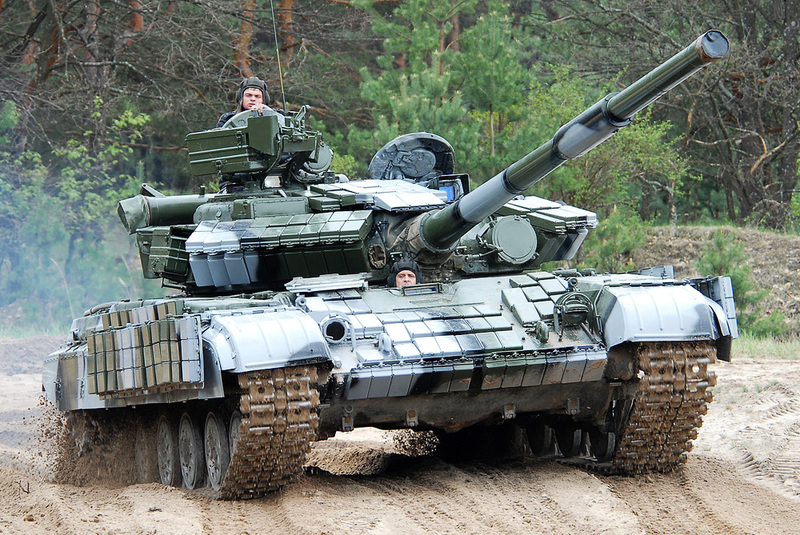 Picture: According to available data, the Ukrainian army had more than 850 tanks before the current extended phase of the war. The vast majority of these were T-64 tanks (about 600), which were manufactured in Ukraine. (illustration photo) | Wikimedia Commons / Public domain
Picture: According to available data, the Ukrainian army had more than 850 tanks before the current extended phase of the war. The vast majority of these were T-64 tanks (about 600), which were manufactured in Ukraine. (illustration photo) | Wikimedia Commons / Public domain
In addition, the Ukrainian army has a large number of tanks (mainly of the T-64 type) in reserve - reportedly more than 1100 tanks. However, a large number of them are in poor condition and it is questionable whether they can be made operational, although Ukraine is trying hard to do so.
Ukraine is also currently receiving tanks from abroad as part of its military aid, mainly from Poland, but also from the Czech Republic. These are older T-72 tanks, albeit partly modernised. They will thus serve primarily as a replacement for current losses.
Russia has a much stronger tank arsenal, with more than 3,000 tanks in active service at the beginning of 2022. The Russian Federation's most modern tank types are the T-90A and T-90M tanks, of which Russia had more than 400. The most numerous Russian tank is the well-known T-72 tank (more than 2,000 units), but most of these tanks have been upgraded to the T-72B3 version (of various designs). The Russian tank army also has about 500 T-80 tanks, a large number of which have also been upgraded.
If we evaluate the Russian tank arsenal, then it is important to mention the fact that Russia has a large number of tanks in reserve. Unfortunately, this factor is often overlooked, which often leads to a certain underestimation of Russia's military potential. Supposedly, about 10,000 tanks (practically of all the aforementioned types) should be stored, but it cannot be ruled out that in reality the numbers will be much higher. It is characteristic of the Russian armed forces that obsolete weapons (and not only tanks, but also other equipment) are not completely scrapped when they are replaced by more modern types, but are transferred to the reserve, when they are put into storage, etc. Moreover, unlike the Ukrainian army, the Russian army takes more care of its tanks stored in reserve, and therefore these tanks can be reactivated more easily. This is evidenced by the recently published report that Russia has deployed T-62 tanks into combat which it no longer officially has in its armament and which have just been placed in reserve.
On the other hand, it should be borne in mind that Russia certainly cannot deploy all its tanks in Ukraine. The Russian Federation needs to have its tank units in other parts of the country, especially on its southern border, in its neighbourhood with the Central Asian states and in the Caucasus. In addition, Russia also has some tank equipment abroad, in former post-Soviet states such as Armenia and Tajikistan, where the Russian army has large tank contingents. Still, the number of Russian tanks is impressive, and certainly exceeds the usually reported figure of about 3,000 tanks.
From a technical point of view, the Russian and Ukrainian tanks mentioned above are similar. All have the classic features of Soviet tank technology - relatively small silhouette and light weight. All of them use a 125 mm caliber cannon (of various designs) as their main armament, which has automatic reloading, which made it possible to reduce the number of crew to three men. The downside, however, is the inconvenient placement of ammunition. Of course, the different types differ in armour (upgraded designs usually received additional armour), the level of instrumentation, different fire control systems, etc. The T-80 tank differs from other tanks in its gas turbine propulsion. Nevertheless, all the mentioned tanks are similar, including their combat capabilities. The more modern designs are often of better quality and capability, but it must be taken into account that the individual older types have been upgraded, so they may ultimately have better capabilities than a newer but unupgraded tank.
If we look at such armies on both sides, it is telling that both sides have only a small number of modern tanks. Ukraine has only about 10 modern T-84 tanks, and about a hundred T-80 tanks that can be considered modern (even the upgraded T-72 and T-64 BMs are inferior). The Russian army is much better off with about 400 T-90 tanks (which represent its most modern tanks). Yet even Russia has surprisingly few of these tanks given its potential. Thus, both sides rely mainly on old, variously upgraded T-72 and T-64 tanks. Neither side has a tank that would provide it with technological superiority. The latest Russian T-14 Armata tank has not been deployed in Ukraine, as it is not even in series production yet, and the Ukrainian tank industry has indeed come up with several projects for truly modern tanks, but these types have not gone beyond mere studies.
On the Russian side there is clearly a quantitative superiority several times over. Ukraine does receive tanks from other countries (T-72 tank deliveries), but even these deliveries do not fundamentally change the unfavourable ratio of tank forces for Ukraine. It is questionable whether Ukraine should even try to "outnumber" Russian tanks. Something like that would clearly be beyond its capabilities (even if it got the tanks for free from its allies).
How to deploy tanks
Since both sides have conceptually similar tanks, they also have similar organizational structures for their tank units. It is also evident in both fighting armies that they have learned from some of the mistakes of the former Soviet army and from the asymmetric conflicts of the present day, and have adapted their tank unit structure and deployment tactics accordingly.
Both armies dispose of tanks mainly in the framework of so-called combined battalions (i.e. battalions combining tanks and IFVs or APCs in different proportions) or brigades. Thus, individual units have relatively small numbers of tanks; this is a significant departure from the former Soviet practice, which envisaged the deployment of entire bundles of divisions, including tank divisions, and thus up to hundreds of tanks (a single Soviet division had about 300 tanks).
Both sides use the tanks quite imaginatively, with an emphasis on making the best use of their basic capabilities, i.e. the ability to manoeuvre quickly and high firepower. Neither side relies on the mere heavy armouring of tanks, a consequence of the deployment of a high number of anti-tank assets as well as the experience of the conflicts in Syria, Iraq, etc.
It is also typical for both sides to allocate appropriate artillery support for their tank units, and brigades thus usually have artillery as an integral part of their force.
Evaluation of tank deployment
If we were to make any assessment of the current deployment of tank equipment in Ukraine, then it should be borne in mind that we are de facto in the middle of a war that may drag on for a long time, and it is therefore important not to draw any hasty conclusions, including premature assessments of the deployment and the military equipment and their capabilities. Nevertheless, I will try to assess the deployment of tanks at least partially.
The current war in Ukraine is the largest conflict in Europe since the Second World War. Hundreds of thousands of soldiers have been deployed in this war so far, as well as huge numbers of combat equipment, including tanks. The loss of both human life and equipment corresponds to this. This war represents hundreds of partial battles and clashes, and very intense ones at that. And it is in these hundreds of battles that the tanks have done surprisingly well.
Tanks in Ukraine clearly demonstrated their traditional capabilities - especially their ability to conduct strike operations, with tanks acting as a kind of armoured fist for other units. Indeed, these strike operations can break the enemy's position in a situation where the fighting in a certain place seemingly freezes (which is what is happening in some places in the Ukrainian conflict), but equally they can act as a unique means of active defence in a situation where a given army is facing an attack by an opponent several times stronger (which is characteristic of the Ukrainian army).
Tanks fighting in Ukraine have demonstrated these capabilities due to their typical characteristics - primarily their powerful gun armament, capable of operating against a wide range of targets. Furthermore, thanks to their high speed, but also their ability to traverse difficult terrain (which, for example, the BTR series wheeled vehicles, which are widely used by both sides in this conflict, could not cope with). Another advantage of tanks is their strong armour, capable of withstanding enemy fire - the conflict in Ukraine clearly shows the importance of armour.
The above findings are likely to have a major impact on the future development of tank technology. It turns out that there is no need to change anything in principle about the design of tanks. It would be wrong, for example, to try to significantly strengthen armament (by further increasing the calibre of the gun) at the expense of armour. However, it would be equally wrong to somehow fundamentally strengthen armour protection at the expense of armament. The experience of the Second World War has clearly shown us that it would be wrong to try to create a tank that included a major improvement in both of these capabilities at the same time, because the result is often technical monsters.
Similarly, tanks have also proved to be important in relation to other types of troops, and other types of troops can practically do without them. Similarly, it has become clear that tanks cannot do without the support of other types of troops, especially infantry and artillery, which suggests that the armed forces, but also individual units, must continue to be built up comprehensively. To build the army as a universal one, capable of fighting a wide range of threats, and not to focus on only one type of equipment. Tanks have proven that they are an integral part of modern armies, and that they cannot be replaced by any other type of military equipment, such as IFVs, Armoured Personnel Carriers or the currently popular drones. It is therefore to be expected that, also thanks to the experience gained so far in Ukraine, interest in tanks in the world will grow.
Alongside these positives, however, some negative experiences from the deployment of tanks in Ukraine should be mentioned, where tanks suffered significant losses (in the number of hundreds of tanks), both on the Russian and Ukrainian sides. This very fact is often mentioned by critics of tanks who would like to replace them with other systems, such as drones. However, it should be remembered that no weapon system is immortal - not even the drones (there have been a large number of drone strikes in Ukraine). The overall scale of the fighting and its intensity must also be taken into account. In addition, the Ukrainian conflict is characterised by the high deployment of infantry anti-tank systems (armoured vehicles, anti-tank guns). Taking this into account, it is clear that the losses are proportional - and it is doubtful that any other weapon system would have performed better.
It is also interesting to analyse which tanks were destroyed in Ukraine and in what way. Quite logically, the tanks that did not undergo any modernization suffered the highest losses - the modernized types (with additional armor, better sensors, etc.) did much better. The fatal destruction of many tanks also demonstrates the old known ailments of the Soviet tank school - relatively weak armour (compared to Western tanks) and above all unfortunate ammunition stowage, which often led to a secondary explosion and subsequent tearing off of the tank turret. Obviously, Western tanks - such as the Leopard 2 tanks - would have fared much better in the situation.
It is sometimes pointed out that Leopard 2 tanks have also suffered significant casualties in their recent deployment by the Turkish army against Kurdish separatists. However, if we look more closely at the fighting in southern Turkey, we find that the absolute number of Leopard 2 tanks lost was relatively small (the US M-60 tanks deployed in the same conflict suffered greater losses). Furthermore, many of the Turkish Leopard 2s were only partially damaged and most were repairable. Moreover, even with a heavy hit, the crew usually survived, whereas in the case of a Soviet school tank hit, the consequences for both tank and crew were usually fatal. In the case of the deployment of Leopard 2 tanks by the Turkish Army, one must also take into account the overall ratio of tanks lost to the total number of tanks deployed, the scale of the fighting, as well as the difficult terrain and the high deployment of anti-tank weapons. The Turkish army's losses were thus proportional (and so evaluated by the Turkish army itself), and certainly lower than in the case of the T-64, T-72 and seemingly modern T-90 tanks.
Still, it would be a mistake to underestimate Russian tanks, especially the T-90 type, in any significant way. From the fact that even these most modern tanks of the Russian Federation have suffered losses, it cannot be clearly concluded that they are completely bad. Again, we must take into account the intensity of the fighting and what these tanks faced and how they were often deployed.
The fighting in Ukraine has shown that if tanks are to be deployed effectively and not to take disproportionate losses, it is important that they have adequate infantry support. This was true during the Second World War and it is still true today. It is only when tanks are accompanied by infantry that the threat posed by the deployment of enemy infantry equipped with anti-tank weapons can be significantly reduced.
In the case of the Czech Armed Forces, it is positive that, in addition to tanks, the tank battalion structure also includes IFVs in the form of one mechanised company, where the infantry carried by them can provide protection for the tanks. Experience not only from Ukraine shows that if this component is directly an integral part of the tank unit, the protection is much more effective than relying on infantry support by other mechanised battalions. In the upcoming, currently postponed, acquisition of new IFVs for the Czech Armed Forces, a small part of the IFVs that will be dedicated to tank support is envisaged.
The fighting in Ukraine has shown, among other things, the high threat to tanks from drones and the associated need for some protection against them. Similarly, the increased passive protection of tanks against these systems (lattice protection mounted on the top of the turret of Russian tanks) has proved ineffective. Thus, tank units need to have some systems to protect against UAVs. In addition, it is important that such a unit dedicated to countering drones be a directly integral part of the tank battalion. This problem has been and will be addressed by virtually all armies, including the ACR.
Conclusion
In conclusion, the fighting in Ukraine, as well as other contemporary military conflicts, has clearly demonstrated that tanks are not a relic of the past and do not belong to the old iron. On the contrary, it has been shown that tanks still have their purpose and are irreplaceable on today's battlefield. Tanks as a type of combat equipment will therefore continue to serve. The various armies will continually modernise their tank units and new tanks will continue to be produced in batches of thousands. The experience from Ukraine clearly shows that tank battles can take place dangerously close to the Czech Republic, and it is therefore necessary to have a ready response to this situation. It is thus a logical step that the tank troops of the Czech Armed Forces are finally being modernised.
















